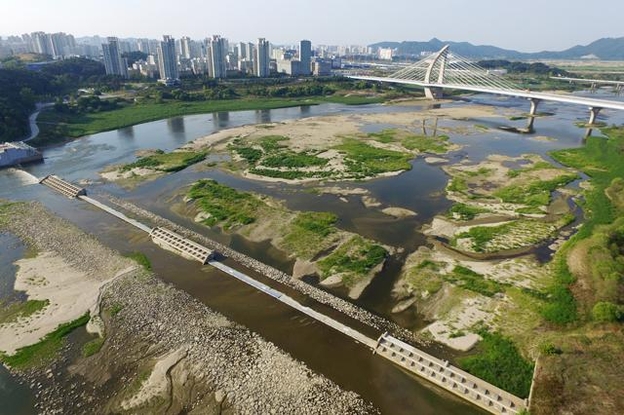Input 2021.01.18 18:33 | Revision 2021.01.18 18:38
Geumgang Sejongbo dismantling, Gongjubo part dismantling, Baekjebo always open
Youngsan River Juksanbo dismantling, Seungchonbo regular opening
Prime Minister “Where birds and fish cannot live, humans cannot live”
On the 18th, the government decided to dismantle Sejongbo and Juksanbo and part of Gongjubo, among the Geumgang and Youngsan rivers built as part of the Four Rivers Project. Baekjebo and Seungchonbo are always open. Prime Minister Jeong Sye-gyun said, “The river must flow.”

On that day, the Presidential Commission on National Water Management deliberated and decided on the’Geumgang and Youngsan River Beam Treatment Plan’, presided over by Prime Minister Jeong Sye-gyun at the government’s Seoul government building. The National Water Management Committee agreed to respect the opinions of each watershed water management committee, and decided on five measures for each provision as follows.
The Geumgang Sejongbo was dismantled, but the timing was decided in consideration of the outcome of the natural recovery initiative and local conditions. In addition, to improve the overall water quality, efforts to fundamentally reduce the inflow pollutant load should be carried out to double the natural recovery effect.
The Geumgang Gongjubo was partially dismantled to maintain the public road, but it was decided to open at all times, taking into account local conditions. Efforts should be made to reduce the pollution load of the incoming stream, improve water quality and water ecology indicators, and resolve regional conflicts.
Geumgang Baekjebo is always open and continuously observed to obtain data related to water quality and water ecology to understand the relationship between the river level and the groundwater level. Measures to use water for neighboring farmers should be prepared, and measures to strengthen the soundness of the water circulation should also be established.
The Yeongsan River Seungchonbo is open at all times, but the opening period should be set appropriately so that there is no obstacle to water use during the dry season, and measures related to water supply such as groundwater and pumping stations should be promptly implemented. In addition, changes in water quality and groundwater level should be observed, and river water supply functions and water quality management measures should also be implemented.
The Yeongsan River Juksanbo is dismantled, but the timing is set in consideration of the long-term view of natural recovery and local conditions. However, it is necessary to review the effect of improving water quality and aquatic ecology while continuing to open and observe in consideration of the situation in which water purification is maintained.

The National Water Management Committee plans to allow the central government, local governments, and local residents to decide when to dismantle or partially dismantle. The Ministry of Environment decided to determine the timing of dismantling or partial dismantling in consultation with local residents, local governments, experts, civic groups, and related ministries, and report it to the Water Management Committee in the future. In the process of implementing the security treatment, the proposals from the National Water Management Committee review process, including the proposals of the Watershed Management Committee, such as the use of agricultural water and groundwater, will be promoted together.
Prime Minister Chung, co-chair of the National Water Management Committee, said at a meeting that day, “The treatment plan for the security must balance the restoration of the natural nature of the river and the use of water desired by the residents.” He said, “Please promote it based on sufficient communication and residents’ consent so that there is no obstacle to the lives of residents around the river.”
Prime Minister Chung said in an article posted on Facebook that he had decided to deal with the Geum and Youngsan rivers among the four major rivers, and said, “The river must flow.” “Where birds and fish can’t live, humans can’t live,” he wrote. “Human is a small part of nature.”

